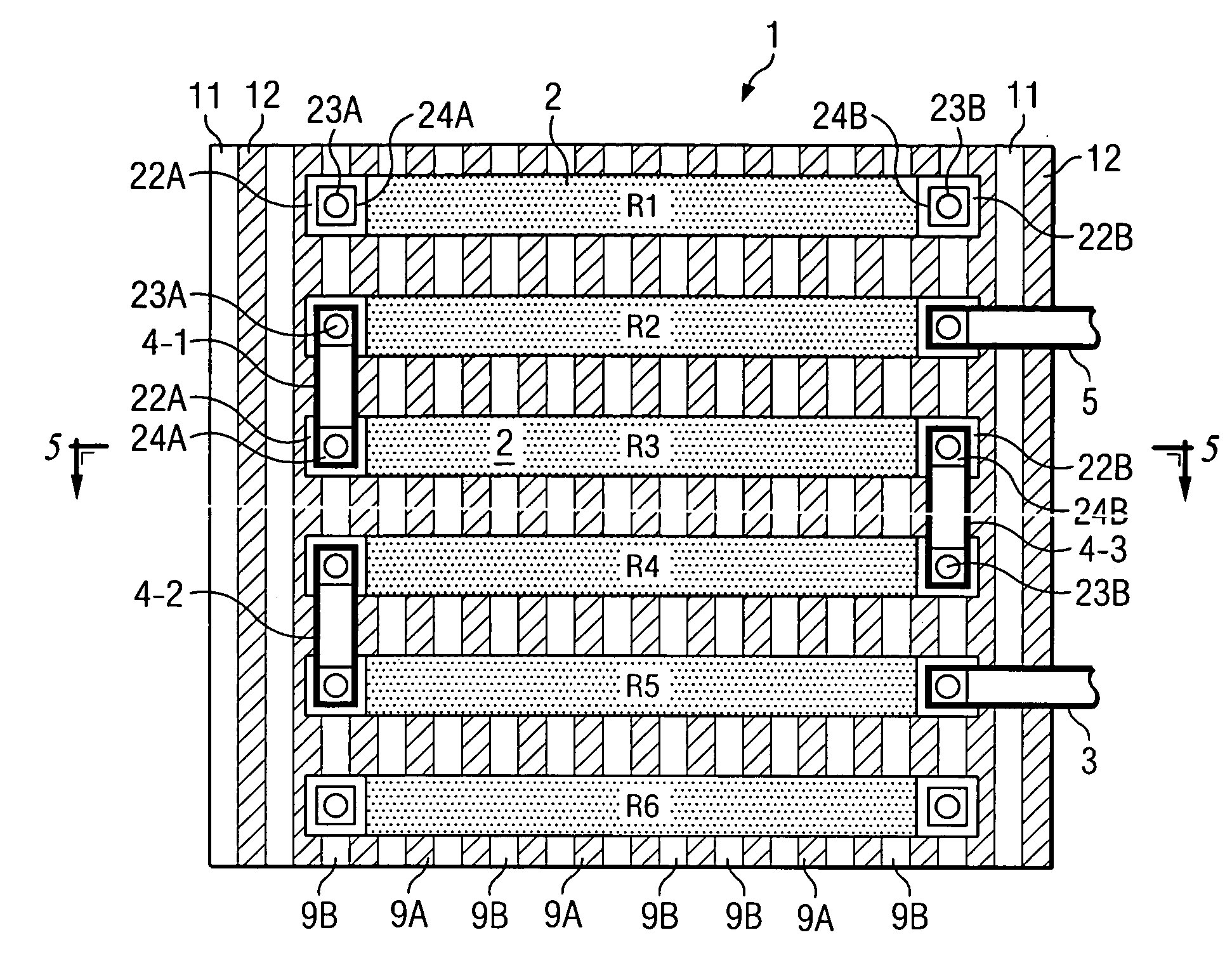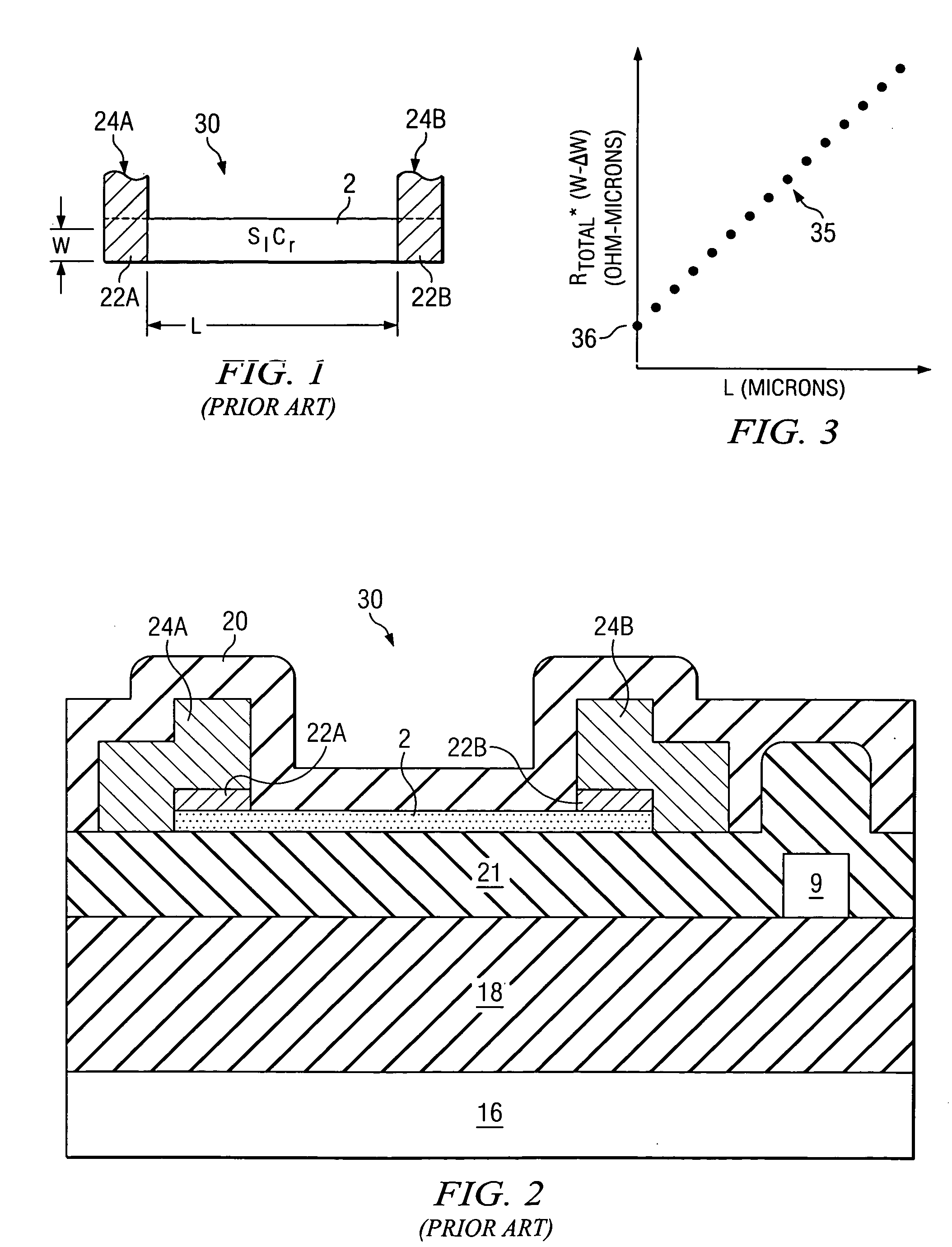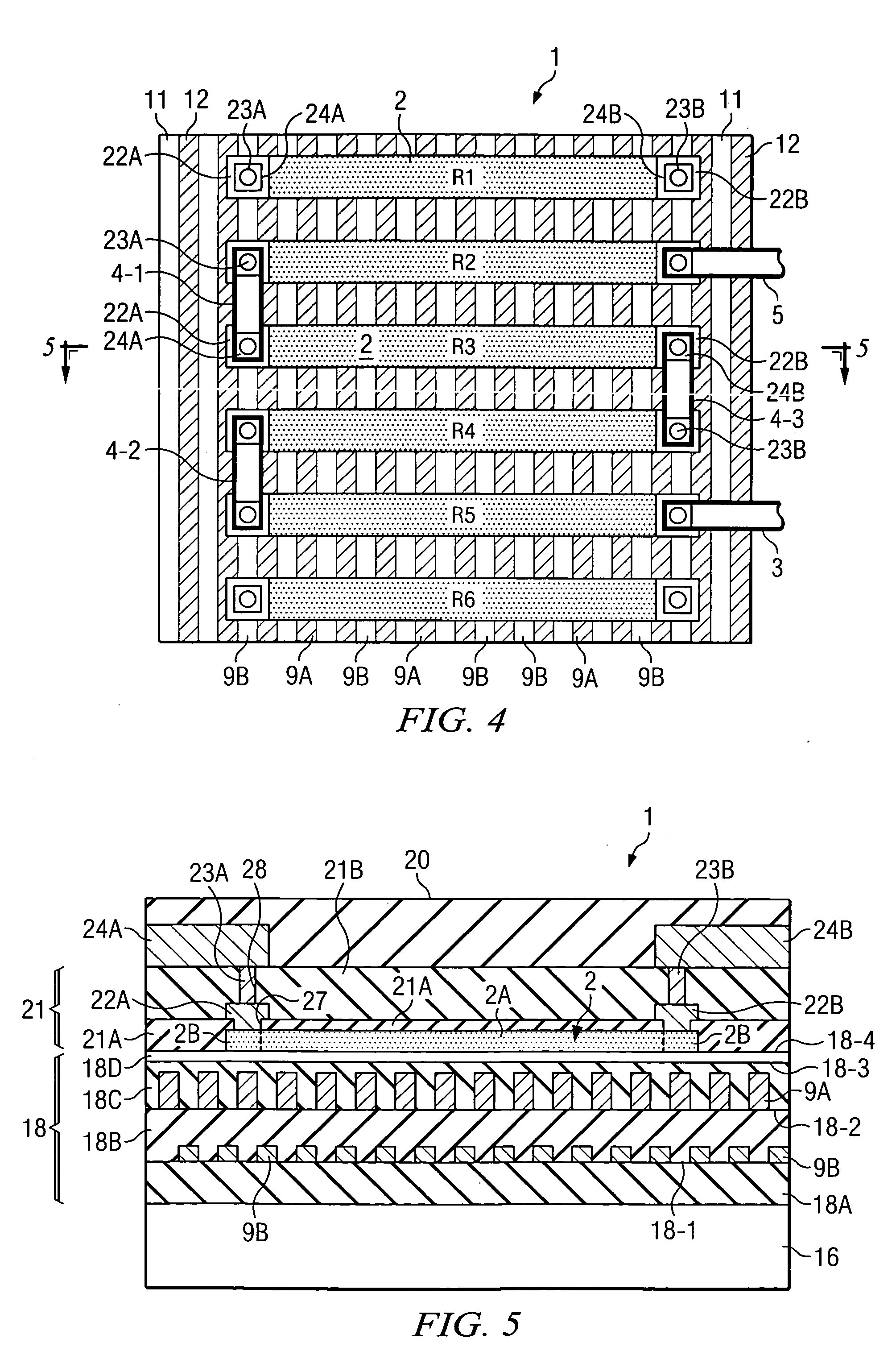Thin film resistor head structure and method for reducing head resistivity variance
a thin film resistor and resistor head technology, applied in resistor manufacturing, semiconductor devices, semiconductor/solid-state device details, etc., can solve the problems of insufficient removal of undesired metallization residues, and inability to meet the requirements of many conventional integrated circuit processing steps. , to achieve the effect of reducing or eliminating the inaccuracy of the resistance and the ratio of the resistance of the thin film resistor head,
- Summary
- Abstract
- Description
- Claims
- Application Information
AI Technical Summary
Benefits of technology
Problems solved by technology
Method used
Image
Examples
Embodiment Construction
[0031] The present invention is directed mainly to head resistivity aspects of the accuracy of thin film resistors. For a high-resistance thin film resistor, the accuracy of the head resistance and head resistivity may not be highly significant, but if the value of the thin film resistor is very low, for example 160 ohms, and very high precision is needed, for example in manufacture of a high-resolution string DAC, the head resistance might be 5 ohms at each end of a 160 ohm string resistor. A high variance in the head resistivity of such a low-value, high-precision string resistor would be completely unacceptable if the main objective was to make a string DAC with 14-bit or higher resolution / accuracy. The following embodiment of the invention provides a structure and method for providing / manufacturing thin film resistors with very low variance of head resistivity.
[0032] Referring to FIG. 4, an experimental integrated circuit resistor structure is shown which includes generally the...
PUM
 Login to View More
Login to View More Abstract
Description
Claims
Application Information
 Login to View More
Login to View More - R&D
- Intellectual Property
- Life Sciences
- Materials
- Tech Scout
- Unparalleled Data Quality
- Higher Quality Content
- 60% Fewer Hallucinations
Browse by: Latest US Patents, China's latest patents, Technical Efficacy Thesaurus, Application Domain, Technology Topic, Popular Technical Reports.
© 2025 PatSnap. All rights reserved.Legal|Privacy policy|Modern Slavery Act Transparency Statement|Sitemap|About US| Contact US: help@patsnap.com



